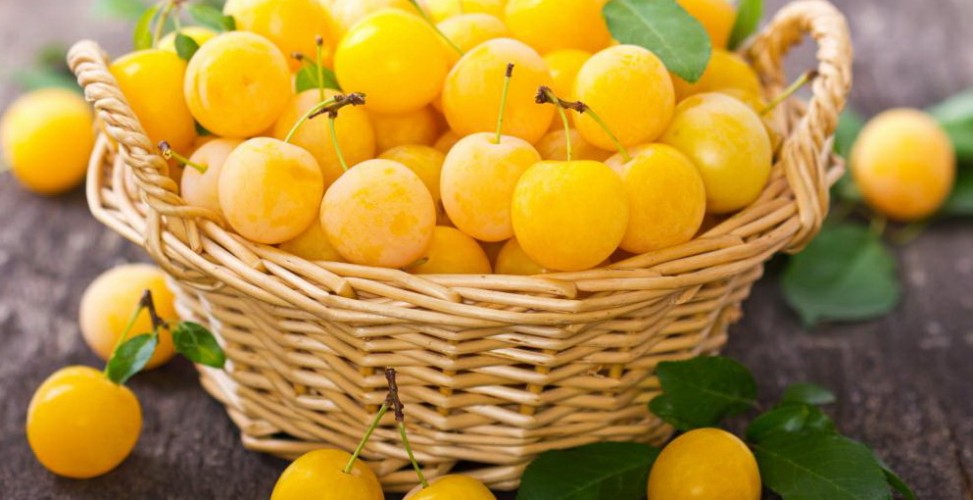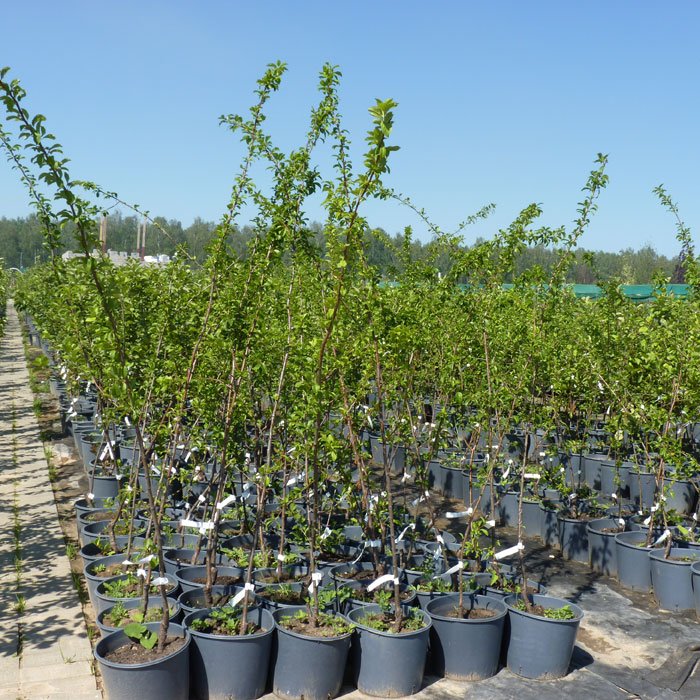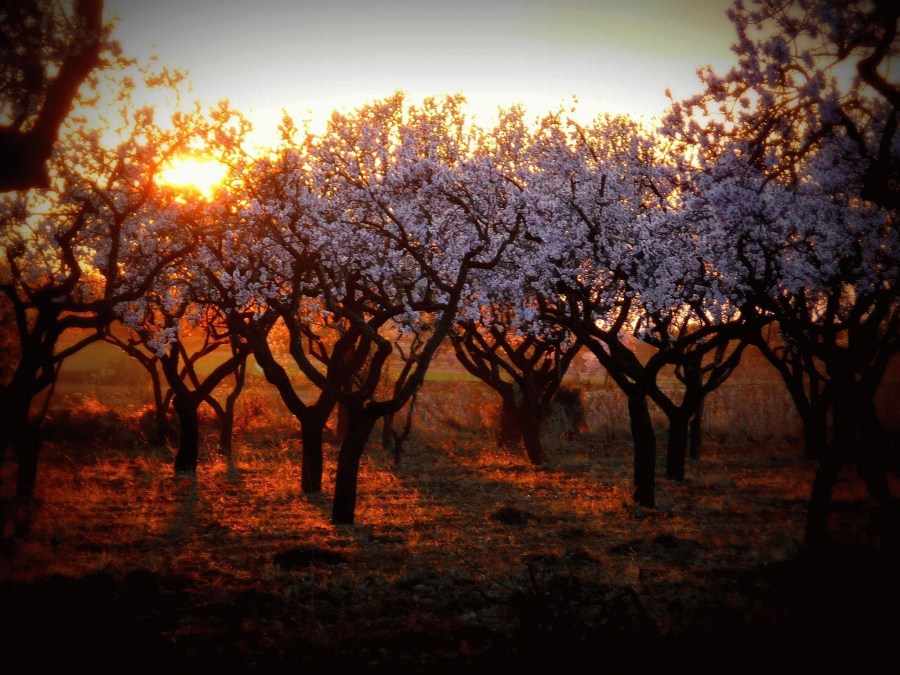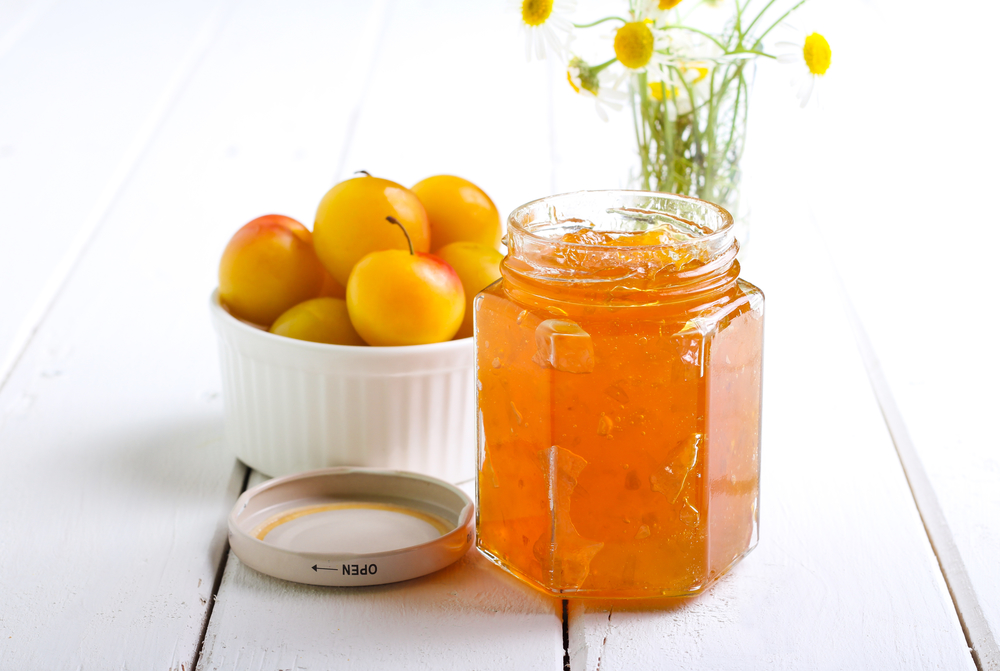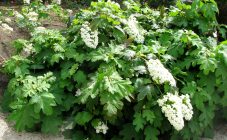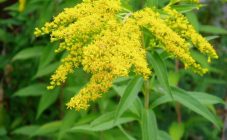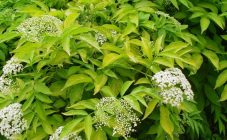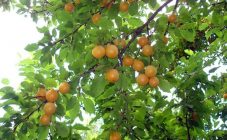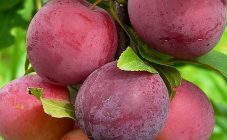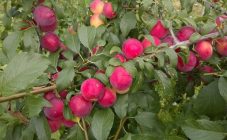Content:
Cherry plum is a tree-like, long-lived (up to 50 years) representative of the Plum genus, the Pink family. In addition to this name, it has common names: spreading plum and cherry-bearing. The name of the culture is translated into Latin as Prúnus cerasífera.
The homeland of the wild and domesticated plant is the Caucasus, but the mountainous regions of the Tan-Shan, Asia Minor, Moldova and the Balkans are also included in the distribution area.
Further in the text, the answer will be given to the question: what is this cherry plum, by considering a detailed description of the fruit tree, the rules for growing and caring for it.
Despite the fact that cherry plum belongs to the plum family, the difference between the two fruits is that the first fruit is rich in fats, carbohydrates and proteins, unlike the second.
Characteristic
In order to understand how cherry plum looks like, it is worth considering in detail all its parts.
Sheet
The green mass has the shape of an ellipse with a sharp tip and raised sides. Each leaf has a brown stem and a light green base.
Trunk
The tree reaches a height of 3 to 11 meters. The length of the trunk depends on the type of plant, since cherry plum can be either a tree or a bush. Dark green branches have thorns.
Flower
The inflorescence is unisexual, non-self-pollinating, consists of one flower, up to 4 cm in diameter, painted in white or pink.
Bloom
Many gardeners are curious about how cherry plum blooms. To satisfy the interest, it should be said that the period of opening the buds lasts for a week, unlike apples and pears, and begins in the second decade of the first month of spring.
Fetus
The spherical fruit is up to 25 mm in diameter and weighs up to 35 g. The color range includes shades from yellow to blue-black - the color depends on the variety. The ripe cherry plum tastes sweet, with a sour aftertaste: it contains about 15% fructose and 8% a mixture of citric acid, pectin, vitamin C and carotene.
The fruit contains a bone in the shape of a convex or concave disc and poorly separable from the pulp. The bone, in turn, contains oil, which is used in soap making and cosmetology to create perfumes.
Description of varieties
Due to the fact that there are a lot of varieties of common cherry plum, it is worth giving a description of the most popular subspecies in order to understand which variety will be preferable for a particular region.
Characteristics of varieties
| Variety / part name | Tsarskaya | Oriole | Kuban comet | Cleopatra |
| Fetus | The fruit weighs up to 20 grams, is colored yellow and contains a predominant percentage of citric acid and fructose. The ripening period occurs in the first decade of the 3rd month of summer. Fruiting begins 24 months after planting | The crop is yellow and ready to harvest in the second decade of the 7th month of the year. A single copy weighs up to 15 g. | The fruit is classified as large-sized, weighs about 40 g, up to 50 kg of harvest from one seedling can be harvested per year. Harvesting time occurs 36 months after planting and lasts from the second decade of July to the first decade of August | Medium-sized crop - weighs up to 35 g. The harvest period begins 4 years after planting. To improve the quality of the crop, it is desirable to plant either 2 other varieties or a Chinese plum at a distance of 5 meters from the variety |
| Trunk | It belongs to the medium-sized type, reaching up to two and a half meters in height | Reaches a height of up to 7 m. It belongs to the medium-growing type | The stem system is of a stunted type, growing up to 2.5 m | Medium-sized shrub, up to 3.5 m |
| Sheet | The green mass is oblong, ovoid, with a pointed tip. The base is painted with a light green color | The deciduous mass has an elliptical shape, painted in a calm shade of green | Elliptical leaves are colored dark green | Oval leaves without pointed ends are neutral green in color |
| Flower | Non-self-pollinating, requires a pollinator at a distance of 15 m | The inflorescence is bisexual, self-pollination is also possible at the expense of other trees | The inflorescence is of the self-pollinated type. Cross-pollination recommended | The variety is capable of pollinating itself, but cross-pollination is recommended to increase the yield percentage |
Agrotechnics
Site preparation
To create a comfortable "home" for the cherry plum seedling, you need to dig a hole 50 by 50 cm on the sunny side of the site. Put a shovel of humus and lime in the groove, half a kilogram of mineral phosphorus-containing fertilizer and mix the resulting mixture thoroughly.
Landing
In order to get a good harvest and keep a healthy tree, it is advisable to plant several varieties of cherry plum seedlings in the 2nd decade of April, in extreme cases - in the first decade of September, in order to prepare the root system for the winter cold.
In the case of planting a crop in the fall, it is necessary to put the seedlings, having previously shaken and straightened the root system, in pre-prepared "houses" and pressed from all sides with earth to a height of up to 10 cm. So that future trees do not freeze and receive protection from mice, overlay them with dry grass, leaves and ash.
After the tree is fixed in the ground, it is advisable to put a stake next to it so that it has support during its growth. As a consolidation of the result, you need to loosen the soil well, water the future fruit abundantly using 2-4 buckets of water and sprinkle the planting site with a layer of peat to make the soil "airy".
Reproduction
Since there are three ways to increase the number of cherry plum trees: by seeds, cuttings and grafting, it is worth considering each of them in more detail.
Seeds
For the procedure, it is advisable to select healthy and ripe fruits and remove the seeds from them. After removing the seeds, they need to be planted in a row in pre-prepared soil (at home or on the street) at a distance of 5 cm from each other. Rows are recommended to be separated by 20 cm of empty space. After sowing, the planting material should be covered with a 3 cm layer of peat and sawdust; in case of planting outside, it is necessary to put snow on top of the mulch.
Cuttings
In order to propagate the fruit with the help of shoots, it is necessary to separate the shoots 25 cm long from the mother root in the autumn period and put them in a wooden or plastic container, sprinkle with a mixture of sand, peat and wet sawdust and store at a temperature not higher than 5 degrees. Planting in early May in a previously prepared garden bed - a greenhouse. Open the greenhouse 30 days after planting and allow the seedlings to grow under normal conditions.
Vaccination
It is advisable to carry out the procedure in the first month of spring or in the last month of summer. To carry out grafting, it is advisable to make an incision in the branch at a height of 35 cm from the ground and tie the stalk to the incision. Keep the obtained result for 30 days, then loosen the rope, remove it in the second decade of June.
Care
In order to harvest a high percentage of the harvest from year to year, it is necessary to properly take care of the tree for six months: from spring to winter, following the guidelines below:
- dig out the ground around the tree from snow so that during the melting process, the water does not flood the roots;
- in May, remove dried and old branches, thin out the crown, leaving up to 20 cm between the branches and remove the top so that it is level with the highest branch;
- remove old bark and process the trunk with potassium permanganate, protecting it from pests and pathogenic bacteria;
- in the case of a large number of ovaries, put stakes as a support for the branches;
- loosen and weed the soil, watering it in 4 buckets at a frequency of 1-2 times a month, in case of drought, increase the amount of soil moisture up to 3 times;
- to feed perennial fruits by applying fertilizer, which includes: 85 g of ammonia solution, 45 g of potassium, 175 g of phosphorus, before flowering and do not touch annuals (for them, feeding is applied during planting).
Preparing for the cold season
In order for the fruit culture to survive the winter safely, it is advisable to apply top-dressing in the form of humus and mineral fertilizers containing potassium, nitrogen and phosphorus by the root method. In order for the fertilizer to achieve its goal, it is recommended to make a hole up to 45 cm deep in the soil next to the fruit bearing.
In addition to feeding, it is recommended to remove old leaves, twigs and bark. After carrying out the "cleaning" of the tree, whitewash the trunk with lime and sprinkle with a solution of copper sulfate to protect the cherry plum from parasites and mice.
Harvesting and transportation rules
Answering the question: when cherry plum ripens, it is worth saying that it is necessary to remove ripe fruits from cherry plum trees 3 times per season: from June to August, as the fruits ripen in stages. During the procedure, it is advisable to cut the fruit along with the tail on which it grew, so as not to damage the skin and to be able to store the crop for a long time.
In the event of possible transportation, gardeners recommend collecting green cherry plum 10 days before transportation and putting it in wooden boxes in three layers so that the product does not deteriorate on the way.
Diseases and pests
Since each representative of the flora is attacked by parasites and pathogenic bacteria, it is desirable to protect the cherry plum:
- remove old bark, branches and leaves, burn them, treat them with insecticides - prophylaxis against the plum moth is underway;
- before flowering, spray the buds with a solution of "Karate" - a measure of struggle against the boring mite;
- remove rotten leaves and fruits from the ground - prevention against mucous sawfly, clasterosporium and red mosaic.
Application
The cherry plum tree, the description of which is presented above, is used in the following areas:
- Cooking - fruits are used fresh, boiled, canned (juices, preserves, jams) and frozen. Leaves are used dry as a spice.
- Landscaping - due to the decorative appearance acquired during flowering, a representative of the flora is planted in gardens as a decoration.
- Gardening - the trunk is considered an excellent base for growing other fruit crops: apricot, peach.
- Medicine - the leaves are used to strengthen the immune system, prevent cardiovascular and viral diseases, diabetes and obesity, are used as a laxative and sedative. A shell from a bone for the manufacture of activated carbon. Infusion of flowers is prescribed for kidney disease and strengthening of male strength.
- Cosmetology - in most cases, green cherry plum is used: the oil from its seeds and the pulp of the fruit are part of the nourishing masks for the face, chest and neck.
Advantages and disadvantages
Among the advantages it is worth noting:
- widespread use;
- frost resistance - flowers easily tolerate a drop in temperature to -8 degrees Celsius, ovaries - to -2 ° C;
- high level of fruiting;
- drought resistant.
Among the shortcomings it is worth adding:
- contraindications for use: gout, gastrointestinal diseases, allergic reaction, age up to 12 years;
- poisoning and heartburn in case of excessive use of the product;
- fastidious in care - lack of attention can lead to a shrinking crop;
- the need to plant several trees to obtain a crop.
Summing up, it is worth noting that not only the distinctive features of the cherry plum culture and tips for caring for it were presented, but also the advantages, disadvantages and areas of application of the tree were considered, after studying which it will be easier to decide whether to plant this fruit in the garden or not.

